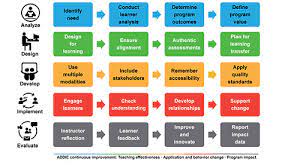Agile in Software Engineering: Embracing Flexibility and Collaboration
In today’s fast-paced and ever-evolving world of software development, the traditional waterfall method often falls short in meeting the demands of clients and stakeholders. Enter Agile, a software development approach that has gained significant popularity over the years.
Agile methodology is a flexible and collaborative approach to software engineering that focuses on iterative development, adaptability, and continuous improvement. It emphasizes delivering working software in shorter cycles or iterations, typically known as sprints.
One of the key principles of Agile is its ability to respond quickly to changing requirements. Unlike the rigid nature of traditional methodologies, Agile embraces change as an opportunity rather than a hindrance. By breaking down projects into smaller increments, Agile allows for more frequent feedback and adjustments throughout the development process.
Another fundamental aspect of Agile is collaboration. The methodology promotes close collaboration between cross-functional teams consisting of developers, testers, designers, product owners, and stakeholders. Communication flows freely within these teams through daily stand-up meetings, where progress updates are shared and any impediments are addressed collaboratively.
The benefits of adopting Agile in software engineering are numerous:
- Faster Time-to-Market: By delivering working software in shorter iterations, Agile enables faster release cycles. This allows businesses to respond swiftly to market demands and gain a competitive edge.
- Improved Quality: Regular testing and feedback loops ensure that issues are identified early on. This leads to higher-quality software as bugs are caught early and can be rectified promptly.
- Increased Customer Satisfaction: Continuous customer involvement throughout the development process ensures that their needs are met effectively. Feedback from stakeholders is incorporated into subsequent iterations, resulting in a product that aligns closely with their expectations.
- Enhanced Flexibility: Agile’s adaptive nature allows for changes to be accommodated at any stage of the project. This flexibility enables teams to respond quickly to market trends, technological advancements, or shifting business priorities.
- Better Team Collaboration: Agile fosters a collaborative environment where team members work together towards a common goal. This promotes knowledge sharing, cross-functional skills development, and a sense of ownership.
While Agile brings numerous advantages to software engineering, it is important to note that its successful implementation requires commitment and discipline from the entire team. Regular communication, transparency, and adaptability are vital for achieving the desired outcomes.
In conclusion, Agile methodology has revolutionized software engineering by emphasizing flexibility and collaboration. Its iterative approach enables faster delivery of high-quality software while ensuring customer satisfaction. By embracing Agile principles and practices, software development teams can navigate the ever-changing landscape of technology with ease.
Exploring Agile in Software Engineering: Definitions, Examples, Principles, and Varieties
- What is Agile team in software engineering?
- What is agile and example?
- What are the 4 principles of agile?
- What are the 4 types of agile?
What is Agile team in software engineering?
In software engineering, an Agile team refers to a group of individuals who work together to develop software using the Agile methodology. An Agile team is typically cross-functional, consisting of developers, testers, designers, product owners, and other stakeholders. The team collaborates closely throughout the development process, following Agile principles and practices such as iterative development, continuous feedback, and adaptability. The primary goal of an Agile team is to deliver high-quality software in shorter cycles or iterations called sprints. By working collaboratively and embracing flexibility, an Agile team can respond quickly to changing requirements and deliver value to customers efficiently.
What is agile and example?
Agile is a software development methodology that emphasizes flexibility, collaboration, and iterative development. It is an approach that allows teams to respond quickly to changing requirements and deliver working software in shorter cycles known as sprints. An example of Agile in action would be a development team working on a mobile app. Instead of waiting until the entire app is complete, they would break down the project into smaller increments and deliver functional features in each sprint. This iterative process allows for continuous feedback and adjustments, ensuring that the final product meets the client’s needs effectively.
What are the 4 principles of agile?
The four principles of Agile in software engineering are the guiding pillars that shape the methodology’s approach to development. The first principle is “Individuals and interactions over processes and tools,” emphasizing the importance of effective communication and collaboration within the team. The second principle is “Working software over comprehensive documentation,” highlighting the focus on delivering tangible results rather than extensive documentation. The third principle is “Customer collaboration over contract negotiation,” emphasizing the active involvement of customers throughout the development process to ensure their needs are met. Lastly, the fourth principle is “Responding to change over following a plan,” acknowledging that change is inevitable and embracing it as an opportunity for improvement. These principles collectively drive Agile teams towards flexibility, adaptability, and customer satisfaction in their software development endeavors.
What are the 4 types of agile?
When discussing Agile in software engineering, a frequently asked question is, “What are the 4 types of Agile?” While there isn’t a definitive list of only four types, there are several popular Agile frameworks commonly used in the industry. These include Scrum, Kanban, Lean, and Extreme Programming (XP). Each framework has its unique approach and set of principles to guide the development process. Scrum focuses on iterative development within fixed timeframes called sprints. Kanban emphasizes visualizing work and limiting work in progress. Lean aims to eliminate waste and maximize value delivery. XP promotes practices like pair programming and continuous integration for improved quality. These frameworks offer flexibility and can be tailored to suit specific project requirements, ensuring efficient and collaborative software development.




